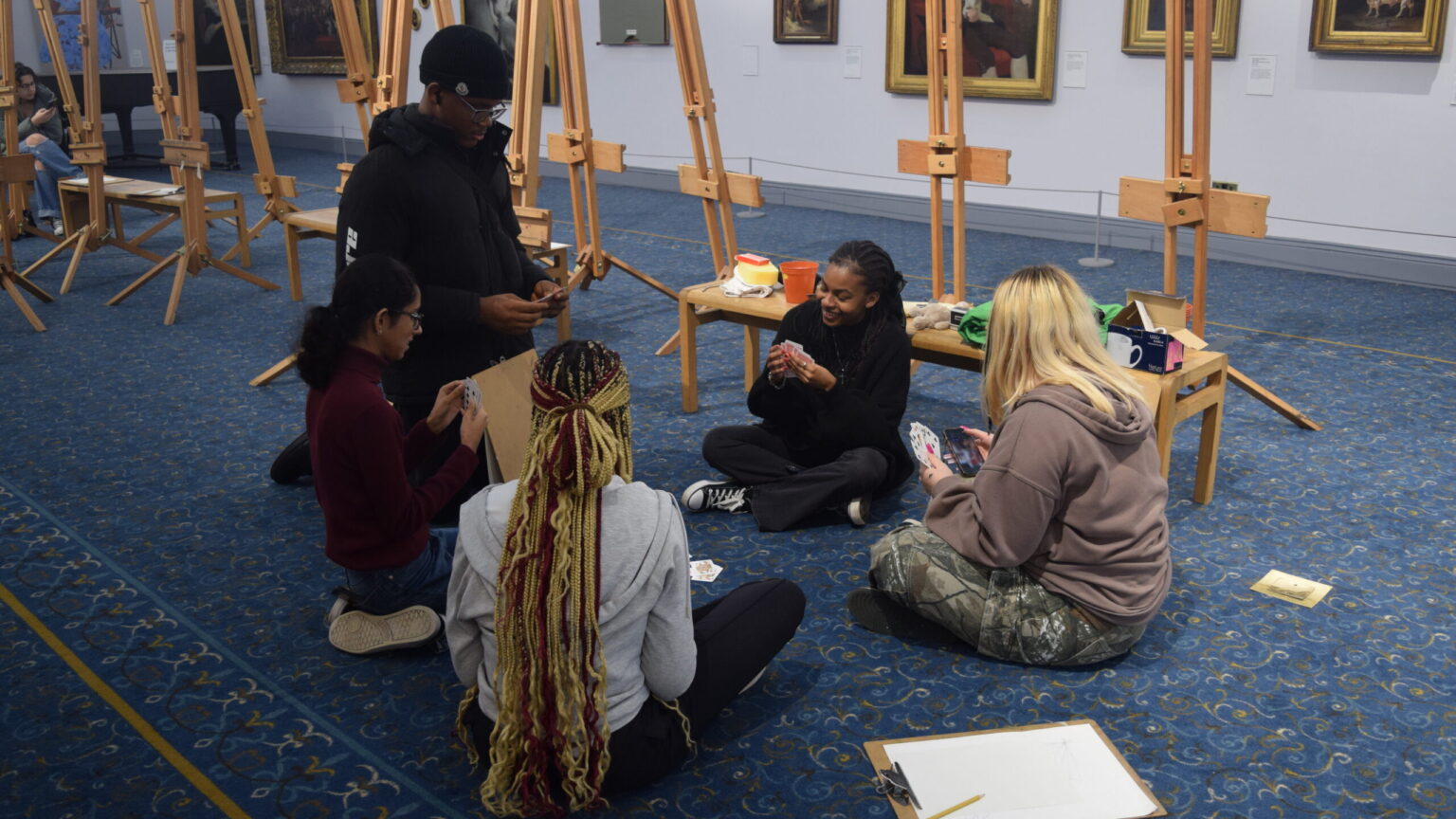Enjoy this article?
Most Museums Journal content is only available to members. Join the MA to get full access to the latest thinking and trends from across the sector, case studies and best practice advice.

This year marks the fifth and final year of the British Museum’s youth-led Where We Are… programme.
The institution has launched an open call for partner organisations to support the initiative, with cultural and third sector organisations across the UK invited to help co-deliver projects.
Interested organisations should apply through the British Museum website by 27 January to be involved in the final year of the programme. A Zoom webinar for prospective partners takes place at 1700 on Monday 20 January.
We chatted to the programme’s lead Hanouf Al-Alawi to find out more about the scheme and its impact.
It's a national programme for young people, specifically underserved groups aged 16 to 24. It aims to remove some of the barriers that young people face in engaging with arts and culture and to build their confidence and agency. It does this collaboratively by working with local partners. It’s called Where We Are… because one of the recurring themes that young people explore in their areas is place-making and identity.
I can say with a lot of confidence that the programme has made a huge difference to young people. Some of the things that come up time and time again are the increases in young people's confidence, sense of safety, and identity.
Last year, we had projects both in Swindon and Wakefield. In Wakefield, the group of young people had not stepped foot in a museum before. By the end of the sessions they had created the Youth Forum in the museum. The forum is a group of young people that meet every month and talk to different teams across the museum about how to make the museum not just a youth friendly place, but a place that represents the voices and the ambitions of young people.
The Swindon team created an exhibition called Pieces of Me that explored identity and it was the first co-curated exhibition led by young people at the museum.
I think it's important that museums get to learn about young people. It’s not about teaching young people how to engage with museums; the onus of that disengagement is on the museums themselves. In terms of barriers, obviously there are financial barriers. We never expect young people to work with us for free.
Another barrier they face is the lack of relevance and representation. What museums and cultural organisations are presenting is not of interest to young people and it doesn't represent them or have meaning for them. We don't come with pre-formulated ideas about what we want people to produce from the programme.
We put absolutely no pressure on a creative output at the end. We're here to create a safe environment and to explore creativity. And how you recruit young people is really important. If you are reaching out to existing networks, you're going to end up recruiting the same kind of people time and time again.
Having a partnership with a charity allows us to reach new audiences. Some of the young people that we've worked with were on the periphery of gang crime. Some of them are migrants and refugees or have caring responsibilities. Some of them were even homeless.
You need to understand what's going on in their lives, and what pastoral support to provide, not just within the sessions, but between the sessions, and outside them.
It’s open to any cultural organisation, not just museums. We've had applications from a cathedral before. We've had them from libraries, archives, galleries. For charities, it's any charity that works with young people. They don't need to be arts and culture focused.
The open call for partnerships is open until 27 January and they can reach out directly to me. What’s really important to understand as well is asset-based approaches because it translates to everything that we do from the way we recruit young people to the way we recruit facilitators, work with artists, or choose a space.
Asset-based approaches recognise people for who they are and not who they're not. When you're working with underserved groups and underrepresented groups, a lot of the time there's a lot of deficit language, things like disadvantaged, disengaged, marginalised.
Asset-based approaches are about seeing people as a whole. We're not here to teach you. You're here to teach us.
Like a lot of outreach work across the museum sector now, it’s externally funded, in our case by the Paul Hamlyn Foundation. The funding allows for six years with one year of developing the programme and five years of delivery.
The legacy of the project is the way that partners continue to work with young people or communities more broadly in their area. So if you visit these organisations and chat to them about what they've learned from Where we are… and how they're working now, it's a significant change.
There is a continuous legacy for the young people as well. They’ve benefited hugely from this programme in terms of skills, confidence, and networking. I'm hoping to share the learning from this programme more widely too.
My department has been looking to deepen the way that we work with young people by applying for further funding to continue this kind of work.
Most Museums Journal content is only available to members. Join the MA to get full access to the latest thinking and trends from across the sector, case studies and best practice advice.